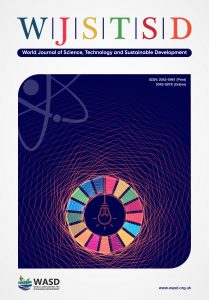A review of learning theories and models underpinning technology-enhanced learning artefacts, Dr. Rawad Hammad, Zaheer Khan, Fadi Safieddin and Prof. Allam Ahmed
Dr. Rawad Hammad
Department of Engineering and Computing
University of East London, London
UK
Email: r.hammad@uel.ac.uk
Zaheer Khan
Department of Computer Science and Creative Technologies
University of the West of England Bristol, Bristol
UK
Fadi Safieddine
Department of Engineering and Computer Science
University of East London, London
UK
Prof. Allam Ahmed
Royal Dock School of Business and Law
University of East London, London
UK
Email: allam@wasd.org.uk
DOI: 10.1108/WJSTSD-06-2020-0062
Purpose: Various technology-enhanced learning software and tools exist where technology becomes the main driver for these developments at the expense of pedagogy. The literature reveals the missing balance between technology and pedagogy in the continuously evolving technology-enhanced learning domain. Consequently, e-learners struggle to realise the pedagogical value of such e-learning artefacts. This paper aims to understand the different pedagogical theories, models and frameworks underpinning current technology-enhanced learning artefacts to pave the way for designing more effective e-learning artefacts.
Design/methodology/approach: To achieve this goal, a review is conducted to survey the most influential pedagogical theories, models and frameworks. To carry out this review, five major bibliographic databases have been searched, which has led to identifying a large number of articles. The authors selected 34 of them for further analysis based on their relevance to our research scope. The authors critically analysed the selected sources qualitatively to identify the most dominant learning theories, classify them and map them onto the key characteristics, criticism, approaches, models and e-learning artefacts.
Findings: The authors highlighted the significance of pedagogies underpinning e-learning artefacts. Furthermore, the authors presented the common and special aspects of each theory to support our claim, which is developing a hybrid pedagogical approach. Such a hybrid approach remains a necessity to effectively guide learners and allow them to achieve their learning outcomes using e-learning artefacts.
Originality/value: The authors found that different pedagogical approaches complement rather than compete with each other. This affirms our recommended approach to adopt a hybrid approach for learning to meet learners' requirements. The authors also found that a substantive consideration for context is inevitable to test our evolving understanding of pedagogy.
Keywords: Learning theories; E-learning models; Technology-enhanced learning; Pedagogy; E-learning pedagogy; Online learning.
Citation: Hammad, R., Khan, Z., Safieddine, F. and Ahmed, A. (2020), "A review of learning theories and models underpinning technology-enhanced learning artefacts", World Journal of Science, Technology and Sustainable Development, Vol. 17 No. 4, pp. 341-354. https://doi.org/10.1108/WJSTSD-06-2020-0062

